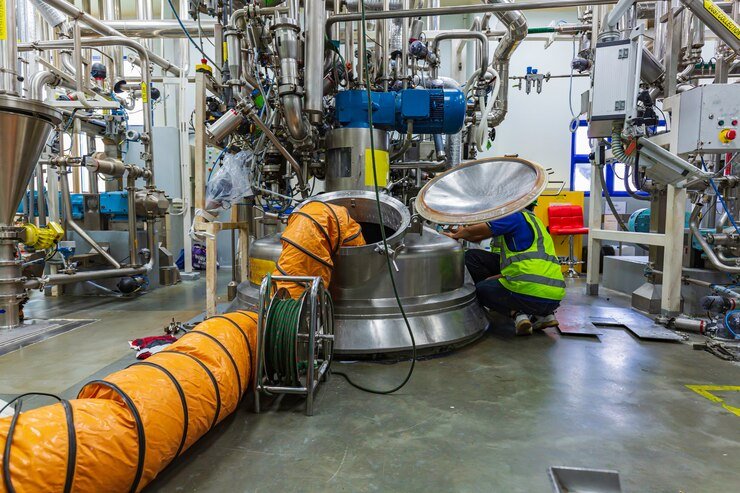Oil suction machines, also known as oil extractors or oil drain pumps, have become indispensable in various industries and automotive applications. These machines are designed to efficiently extract used oil from engines, gearboxes, and other machinery, ensuring smooth maintenance and operation. Beyond their primary function, oil suction machines also play a role in air purification, making them a critical component in maintaining both equipment performance and workplace air quality. This article explores the features, benefits, and applications of oil suction machines, emphasizing their contribution to air purification and environmental safety.
What is an Oil Suction Machine?
An oil suction machine is a device that removes used oil or other fluids from engines, gearboxes, and industrial machinery. It typically consists of a suction pump, a collection container, and a series of hoses and nozzles. The machine operates by creating a vacuum that draws oil from the source into the collection container, facilitating easy disposal or recycling. These machines are used in various settings, including automotive repair shops, industrial plants, and service centers.
Key Features of Oil Suction Machines
- Powerful Suction:
- Vacuum Pump: The core of the oil suction machine is its vacuum pump, which creates a strong suction force to extract oil quickly and efficiently. This ensures that even thick or contaminated oil can be removed with ease.
- Adjustable Suction Levels: Many machines offer adjustable suction levels, allowing users to customize the extraction process based on the type and viscosity of the oil.
- Versatile Nozzles and Hoses:
- Various Attachments: Oil suction machines come with a range of nozzles and hoses designed to fit different oil extraction points, including dipsticks, oil pans, and drain plugs. This versatility makes them suitable for various types of vehicles and machinery.
- Flexible Hoses: Flexible hoses facilitate access to hard-to-reach areas, ensuring thorough oil extraction without the need for disassembly.
- Efficient Collection:
- Large Capacity Tanks: Collection containers are typically designed to hold substantial quantities of oil, reducing the need for frequent emptying and allowing for efficient handling of large volumes.
- Transparent Tanks: Many machines feature transparent tanks or level indicators, enabling users to monitor oil levels and prevent overflows.
- Portable and User-Friendly Design:
- Mobility: Portable models are equipped with wheels or handles for easy movement around the workshop or facility. This mobility enhances convenience and usability.
- Simple Controls: User-friendly controls and interfaces make the operation of oil suction machines straightforward, even for those with minimal technical experience.
- Safety Features:
- Overflow Protection: Safety mechanisms such as automatic shutoff or overflow protection prevent spills and leaks, ensuring safe operation and handling of used oil.
- Heat Resistance: Materials used in oil suction machines are often resistant to heat and chemical corrosion, providing durability and longevity in demanding environments.
Benefits of Oil Suction Machines
- Efficient Oil Extraction:
- Time-Saving: Oil suction machines significantly reduce the time required for oil changes or fluid extraction compared to traditional methods. This efficiency improves overall productivity and minimizes downtime.
- Complete Drainage: The powerful suction capabilities ensure that virtually all used oil is removed from the engine or machinery, promoting thorough maintenance and reducing the risk of contamination.
- Environmental Protection:
- Safe Disposal: By collecting used oil in a controlled manner, oil suction machines facilitate safe disposal or recycling, reducing the risk of environmental contamination.
- Reduced Spillage: The design of these machines minimizes the chance of spills and leaks, protecting the environment and workplace from hazardous oil residues.
- Improved Air Purification:
- Less Emissions: Efficient oil extraction and disposal reduce the emissions of volatile organic compounds (VOCs) and other harmful substances that can degrade air quality. This contributes to cleaner air purification in automotive repair shops and industrial facilities.
- Cleaner Work Environment: By preventing oil spills and leaks, oil suction machines help maintain a cleaner work environment, reducing the release of pollutants into the air and contributing to overall air purification.
- Enhanced Equipment Performance:
- Regular Maintenance: Regular and efficient oil changes facilitated by oil suction machines ensure that engines and machinery operate smoothly and efficiently, reducing wear and tear and extending equipment lifespan.
- Optimal Functioning: Proper oil extraction prevents contamination and buildup of sludge or debris, which can impair the performance of engines and mechanical systems.
- Cost-Effective Operation:
- Reduced Labor Costs: Automation of the oil extraction process reduces labor costs associated with manual oil changes and fluid handling.
- Minimized Waste: Efficient extraction and disposal reduce waste and associated costs, making oil suction machines a cost-effective solution for fluid management.
Applications of Oil Suction Machines
Oil suction machines are used in various industries and applications, each benefiting from the efficiency and environmental advantages of these devices:
- Automotive Repair and Maintenance:
- Oil Changes: In automotive repair shops, oil suction machines streamline the process of changing engine oil, transmission fluid, and other lubricants, improving service efficiency and customer satisfaction.
- Fluid Extraction: These machines are also used for extracting coolant, brake fluid, and other vehicle fluids, ensuring comprehensive maintenance and servicing.
- Industrial and Manufacturing:
- Machine Maintenance: In industrial settings, oil suction machines facilitate the extraction of lubricants and hydraulic fluids from machinery, ensuring optimal performance and reducing the risk of breakdowns.
- Fluid Handling: These machines are used for handling various industrial fluids, including cutting oils, coolants, and greases, promoting efficient fluid management and disposal.
- Marine and Aerospace:
- Engine Servicing: In marine and aerospace applications, oil suction machines are used for servicing engines and mechanical systems, ensuring reliability and safety in challenging environments.
- Hydraulic Systems: These machines also assist in the maintenance of hydraulic systems, providing efficient extraction of hydraulic fluids and preventing contamination.
- Agricultural and Construction Equipment:
- Heavy Machinery: Oil suction machines are employed in the maintenance of agricultural and construction equipment, such as tractors, excavators, and loaders, ensuring smooth operation and reducing downtime.
- Fluid Management: Efficient fluid extraction and handling support the management of oils and lubricants used in heavy machinery, promoting environmental sustainability.
Choosing the Right Oil Suction Machine
When selecting an oil suction machine, consider the following factors to ensure it meets your specific needs and operational requirements:
- Capacity and Volume:
- Tank Size: Choose a machine with a tank size that matches the volume of oil you typically handle. Larger tanks are suitable for high-volume operations, while smaller tanks may be adequate for occasional use.
- Suction Power:
- Pump Efficiency: Ensure the machine has sufficient suction power to handle the viscosity of the oil and the required extraction speed. Adjustable suction levels provide flexibility for different applications.
- Mobility and Portability:
- Portability: Consider the mobility of the machine, especially if you need to move it frequently within a workshop or between different locations. Portable models with wheels or handles offer added convenience.
- Ease of Use:
- User-Friendly Controls: Look for machines with simple and intuitive controls, making them easy to operate even for users with minimal technical expertise.
- Maintenance: Choose a machine that is easy to clean and maintain, with accessible parts and straightforward maintenance procedures.
- Safety Features:
- Overflow Protection: Ensure the machine has safety features such as automatic shutoff or overflow protection to prevent spills and ensure safe operation.
- Durability: Select a machine made from high-quality, heat-resistant materials that can withstand the demands of your specific application.
Conclusion
Oil suction machines are essential tools for efficient oil extraction, maintenance, and air purification in various industries. By leveraging advanced suction technology, these machines enhance productivity, ensure environmental protection, and contribute to cleaner air quality. Whether in automotive repair, industrial maintenance, or heavy machinery servicing, oil suction machines provide a cost-effective and reliable solution for fluid management. As industries continue to prioritize efficiency and environmental sustainability, the role of oil suction machines in promoting optimal equipment performance and workplace safety will only become more significant.





+ There are no comments
Add yours